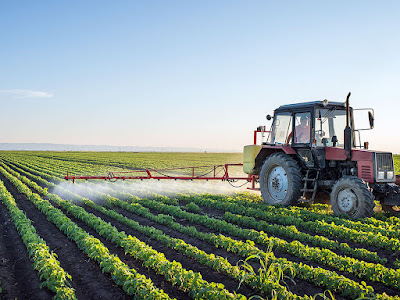India is an agricultural country. It is clear that today when the country is in the throes of an economic downturn, we have failed to address the economic policies of industrialization and agriculture. There is always a feeling of empathy in all classes about farmers. However, it is also clear that only if agricultural economic policies and the proper use of modern technology change, agricultural income will increase, India will make its mark in the international market and Indian farmers will grow.
Technology plays a major role in the development of the Indian agro-industry. Today it is becoming possible to grow crops in the desert using agricultural biotechnology. With this technology, plants have been engineered to survive drought conditions.
Many scientists have been able to identify the unique characteristics of plant components to make them resistant to drought and pests through genetic engineering. An example would be given here, a bacterium called “Bacillus thuringiensis” acts as a reservoir, enabling crops to become pest-resistant, so these genetically modified crops can grow without pest intervention.
The discovery of this technology is being used in developing countries to grow cash crops such as cotton, as these genetically engineered cotton seedlings are pest resistant and grow better than ordinary cotton plants, resulting in better results.
The basic technology of agricultural machinery has changed little in the last century. The use of computer monitoring systems, GPS locators, self-steering programs, or sensors for harvesting, threshing, or threshing has begun in tractors and other equipment.
The Technology is changing the way machines are operated to bring more precision in the use of seeds or fertilizers. In the future, some agricultural machines may be further enabled to automate using GPS maps and electronic sensors. Even more fantastic are the new areas of nanotechnology and genetic engineering, where sub-microscopic equipment and biological processes, respectively, can be used to farm in new and different ways.
Farmers in England use mobile apps to measure the amount of grass in the field. In countries like England and Scotland, the mobile app 'Farmgrage' is currently gaining popularity. Today, farmers in Russia use drones to spray large crops. This saves farmers time and money, they know what to feed their animals on mobile. Technology is used in irrigation water, fertilizers and pesticides.
Modern agricultural technologies include related journals on experimental food chemistry, experimental fisheries and livestock production, food and industrial microbiology, synesis e-agrotechnology, plant pathology, nutrient cycling in agroecosystems, soil use, and management.
The growing number of smartphones is opening up new options for farmers. We call this conversion Farming 3.0. Farming running till mid-1960 1.0. Its main feature was land reform. The second phase, Farming 2.0, was launched in 1960 to secure food security in India. From this we got tractors, many types of seeds, irrigation, now it is time to cultivate properly. The role of technology is going to be important to make this revolution a reality. Farming 3.0 is also available on seven to twelve versions of agriculture on mobile, it will be connected to a live map like Google-Map in a few days.
It is safe to say that climate change is a major obstacle for agriculture in India. Emphasis should also be placed on increasing natural resources for energy generation i.e. technology to increase solar and wind energy. As climate change will increase water scarcity in the future, more emphasis should be placed on balanced water conservation and finding alternatives. For this, the meteorological department is increasing its efficiency through various artificial satellites. Accepting technology from farmers is a kind of investment for the country.
Economic and environmental factors are important in the process of developing and identifying innovation, mainly in agriculture. Technology has made agriculture a real business, now farmers have also electrified every process, the customer can order directly online, and to increase this quantity, today's new blood farmers have to learn and adopt modern technology. In fact, it is already agriculture, agriculture is the oldest occupation but the nature of agriculture is changing. Instead of farm laborers, robots are now doing farm work. The next question that arises is what about the many jobs that depend on agriculture? Of course, agricultural laborers also have to learn new technologies.
Ultimately the economy runs on human needs. The needs are constantly changing. We are experiencing a huge difference between our needs even before globalization and today's needs. At present, Indian agriculture needs a wide range of modern technologies and this will help change the picture of future agriculture.
